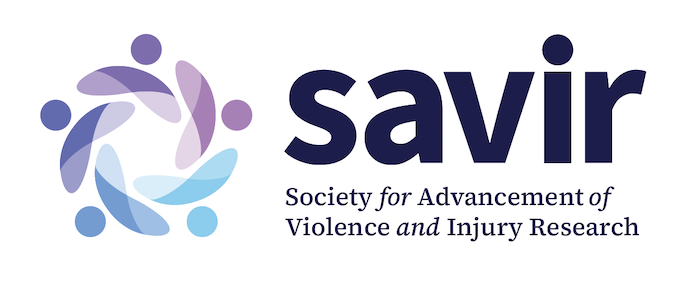Details
May 7 (2:50PM) - June 6 (2:50PM), 2021
International Journal of Injury Control and Safety Promotion
Call for Papers - Abstract Submission Deadline extended to June 6, 2021. Paper submission Deadline: July 29, 2021
International Journal of Injury Control and Safety Promotion
Call for Papers
“Special Issue on Violence against children”
Journal: The International Journal of Injury Control and Safety Promotion (ICSP) is dedicated to publishing high-quality research on all fields of fatal and non-fatal injuries, including prevention, control, acute care, rehabilitation, and the causes and risk factors of injury. The Journal publishes high-quality original articles, reviews, and short communications in all injury control fields, including prevention, acute care, and rehabilitation. ICSP encompasses topics related to studying all causes of fatal and non-fatal injury, including injuries related to but not limited to: transportation, school and work, home and leisure activities, sports, and violence and assault.
Abstract Submission Deadline: extended to June 6, 2021
Paper submission Deadline: July 29, 2021
Guest Editors:
Andrés Villaveces, MD, MPH, PhD, (Centers for Disease Control and Prevention) is a physician and injury epidemiologist who has worked with national and international organizations in the area of injury and violence prevention. His current research is focused on estimating and assessing the prevalence and risk factors of violence against children in several countries.
Shankar Viswanathan, DrPH, MSc, (Albert Einstein College of Medicine) is a biostatistician and injury epidemiologist who has extensive design and injury data analysis experience. His research is focused on child maltreatment, specifically abusive head trauma.
Overview: Violence against children in all forms is a global public health, socio-economic, and human rights issue with long-term negative consequences for individuals and societies1.
According to the World Health Organization (WHO), violence against children includes all forms of violence against people under 18 years old. It can be expressed as child maltreatment (physical, sexual and emotional abuse and neglect) perpetrated by parents or caregivers, as physical, sexual, or emotional abuse against boys and girls, or all forms of violence, including peer violence and intimate partner violence in adolescence2.
Most nations in the world ratified the 1989 United Nations Convention on the Rights of the Child3, a document that recognizes freedom from violence as a fundamental human right of children; violence against children and youth persists in virtually every country of the world. The world has set its vision on achieving the ideals of this Convention and more proximally on achieving the 2030 Sustainable Development Goals4, many of which directly influence children’s lives. The Sixty-seventh World Health Assembly (WHA) has also endorsed the WHO “Global plan of action on strengthening the role of the health system within a national multisectoral response to address interpersonal violence in particular against women and girls, and against children”5. The recognition of this global problem is a really important step.
In recent years more data from multiple regions of the world have become available and highlight the devastating impact of violence against children; however, there are still many knowledge gaps from a wide variety of geographic regions as well as about the contexts and mechanisms in which violence affects children, adolescents, and youth. Evidence shows that early exposures to adverse childhood experiences and violence are linked with various physical, mental, obstetric, behavioral, and chronic conditions that are associated with increased mortality and a reduced lifespan6. Global estimates of the past-year prevalence of violence show that approximately over half of the worldwide population of children or 1 billion, ages 2 to 17-years- old have experienced one or multiple forms of violence7.
Objectives and scope: Violence against children is preventable. To adequately adapt preventative efforts in a variety of settings, the contexts, and factors that lead to or protect from violence need to be understood. This issue of the International Journal of Injury Control and Safety Promotion seeks to highlight global research on violence against children. This supplement’s objective is to present important evidence useful to inform policies and interventions and highlight the need to strengthen all actions aimed at achieving a world free from violence as a fundamental human right of children.
References
- World Health Global status report on violence prevention 2014. 2014:274. December.
- World health Violence against children. Accessed Feb 25, 2020. https://www.who.int/health-topics/violence-against-children#tab=tab_1
- Convention on the Rights of the Child. UNICEF. Updated Aug 2008. Accessed June, 2010. http://www.unicef.org/crc/
- United Nations Sustainable development goals. Accessed Feb 25, 2021. https://sdgs.un.org
- World health Organization. Global plan of action to strengthen the role of the health system within a national multisectoral response to address interpersonal violence, in particular against women and girls, and against children. Accessed feb 25, 2021. https://www.who.int/reproductivehealth/publications/violence/global-plan-of-action/en/
- Felitti VJ, Anda RF, Nordenberg D, et al. REPRINT OF: Relationship of Childhood Abuse and Household Dysfunction to Many of the Leading Causes of Death in Adults: The Adverse Childhood Experiences (ACE) Study. Am J Prev Med. Jun 2019;56(6):774-786. doi:10.1016/j.amepre.2019.04.001
- Hillis S, Mercy J, Amobi A, Kress H. Global Prevalence of Past-year Violence Against Children: A Systematic Review and Minimum Estimates. Pediatrics. Mar 2016;137(3):e20154079. doi:10.1542/peds.2015-4079
Topics that will be given priority but are not limited to include:
- Child maltreatment (abuse and neglect) as an outcome
- Child maltreatment (abuse and neglect) as an exposure
- Strategies and policies to prevent child maltreatment
- Study design issues for assessing child abuse and neglect
- New interventions to prevent and mitigate child maltreatment
- Implementation methods to determining violence against children
- Secondary data analysis of violence against children data using novel statistical methods
- Violence Against Children in the context of the COVID-19 pandemic
Process for submitting papers
Submit a structured abstract of no more than 250 words including: Purpose, Methods, Results, and Conclusions to icspjournal@gmail.com by May 31, 2021.
Abstracts will be reviewed and prioritized by the guest editors. Authors of the selected abstracts will then be asked to submit a full paper to the International Journal of Injury Control and Safety Promotion by July 15, 2021 for publication by December 2021.
Submission is open to everyone. Before submitting your manuscript, please ensure you have carefully read the submission guidelines for Injury Control and Safety Promotion.




